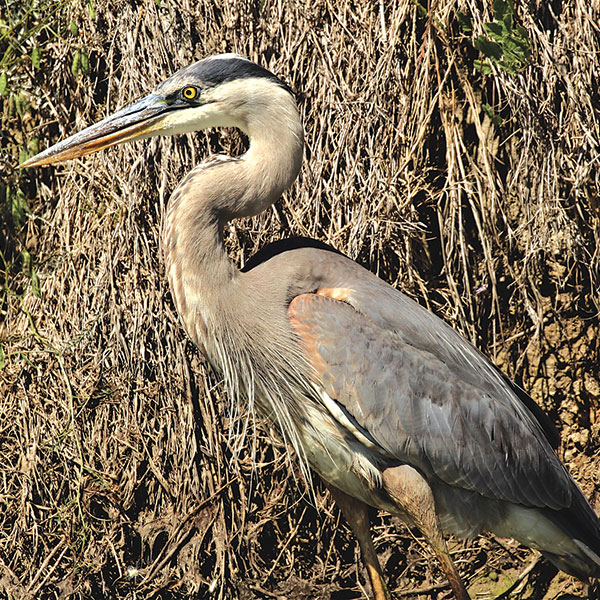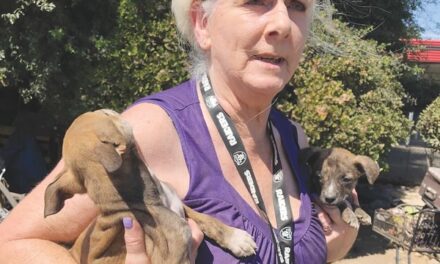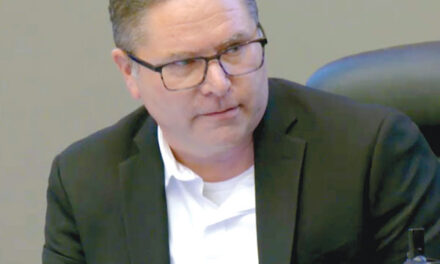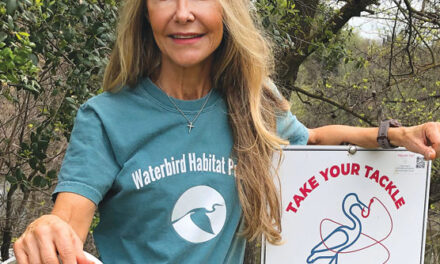Nestled 40 feet high in the branches of a willow tree, the great horned owl scrutinizes her surroundings. Two chicks are barely visible within the confines of their twisted twig nest.
Despite her skyward proximity and camouflage feathers, the bird of prey comes into touchable view through a spotting scope. Her home, along with 200 other bird species, is the state-owned Yolo Bypass Wildlife Area.
Stretching 16,000 acres across both sides of the Yolo Causeway along I-80 between Sacramento and Davis, the nature refuge is managed by the California Department of Fish and Wildlife for flood control, animal and habitat protection, recreation and education.

On an early summer Saturday, I join five other visitors and three docents from the nonprofit Yolo Basin Foundation for a tour of the area’s native grasslands, riparian forests and seasonal wetlands.
We follow a lead guide, each in our own vehicle, along the gravel “auto tour” loop, pulling over along the way, cameras and binoculars in hand. Red-winged blackbirds, snowy egrets, great blue herons, a red-tailed hawk, Swainson’s hawk, American white pelican and the great horned owl are among the 29 species we witness.
The raptors and shorebirds are primarily year-round residents. November through January, our guide tells us, the skies and wetlands are painted solid with migrating waterfowl.
The Yolo Bypass Wildlife Area supports millions of migrating birds, including ducks and geese, who need a stopover on their annual north-to-south trek along the Pacific Flyway. The wetlands provide open water and vegetation for nourishment and rest.
Yet 90 percent of the Central Valley’s wetlands have been lost due to development and other factors. “Waterfowl and shorebirds migrating through the Central Valley today are surviving off of isolated, postage stamps of wetlands across a landscape of agriculture and urban development,” reports the National Audubon Society.
In a mutually beneficial partnership between man and nature, much of the Yolo Basin land is leased to rice farmers. In return, the rice fields provide food and habitat to the wildlife who depend on the fields for survival. Come fall, after the rice is harvested, the migrating birds, as well as year-round residents, dine on the precious white grains left in the fields.
“The rice growers used to burn the fields, but that changed,” says Martha Diepenbrock, executive director of the Yolo Basin Foundation. “The ecosystem between the wetlands and the rice and the birds has come to be a symbiotic relationship.”
It’s rice planting season during our guided tour and crop dusters fly low across the terrain. “Most people think when they see the planes that they’re dropping pesticide,” Diepenbrock says. “When they see those planes flying low over the rice fields, they are planting.”
But the drought continues to threaten these surrogate wetlands. Less rain and snow mean less water devoted to agriculture, which results in fewer rice fields to support Sacramento Valley’s wildlife. “Millions of waterfowl and scores of other wildlife species in California lose critical habitat if fewer acres of rice are planted,” reports the California Rice Commission.
The Yolo Bypass Wildlife Area “has old riparian water rights that go back a long time,” Diepenbrock says. “That’s why the wildlife area has been able to have some water. There is a lot of pressure on all the various species that depend on the wetlands and the water that is now all managed.”
Our 9-mile tour ends at Parking Lot G where we are greeted by hundreds of cliff swallows as they dive and dance in the sky above our heads. An old wooden bridge provides shelter and structure for the swallows to build their gourd-shaped mud nests, lined with dry grass to keep their chicks warm.
“You see so many different things over the course of the year,” Diepenbrock says. “Go out there more than once. The water changes. The animals change. The birds change. The sky changes. Each time is its own experience.”
For more information, visit yolobasin.org.
Cathryn Rakich can be reached at crakich@surewest.net. Follow us on Facebook, Twitter and Instagram: @insidesacramento.
















